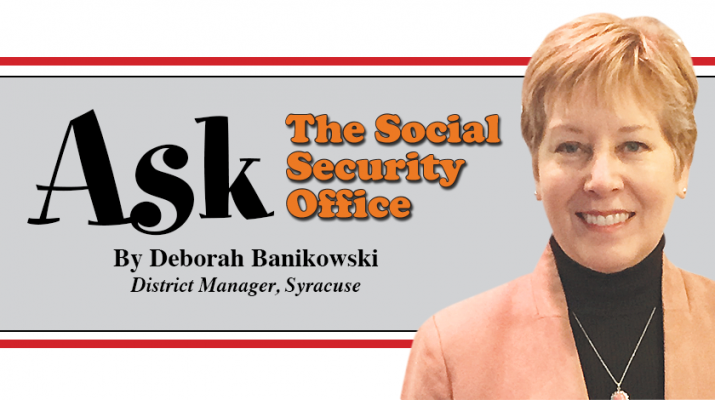We’ve made getting your annual Benefit Statement even easier. The Benefit Statement, also known as the SSA-1099 or the SSA-1042S, is a tax form we mail each year in January to people who receive Social Security benefits. It shows the total amount of benefits you received from us in the previous year. You can use this information when you file your tax return, as it shows how much Social Security income to report to the Internal Revenue Service.
If you live in the United States and you need a replacement SSA-1099 or SSA-1042S, go online to get your instant, printable replacement form using your personal my Social Security account at www.ssa.gov/myaccount. Look for your replacement SSA-1099 or SSA-1042S for the previous tax year in your personal account after Feb. 1.
If you don’t have access to a printer, you can save the document to your computer or email it to yourself. If you don’t have a my Social Security account, creating one is very easy to do and usually takes less than 10 minutes.
And that’s not all you can do with a personal account. If you receive benefits or have Medicare, your personal my Social Security account is also the best way to:
• Request a replacement Social Security number card (in most states and the District of Columbia).
• Get your benefit verification letter.
• Check your benefit and payment information.
• Change your address and phone number.
• Change your direct deposit information.
• Request a replacement Medicare card.
• Report your wages if you work and receive Social Security disability insurance or Supplemental Security Income benefits.
If you’re a non-citizen who lives outside of the United States and you received or repaid Social Security benefits last year, we will send you form SSA-1042S in the mail. The forms SSA-1099 and SSA-1042S are not available for people who receive Supplemental Security Income benefits.
If you don’t have a personal my Social Security account, you can create one today at www.ssa.gov/myaccount.
Q&A
Q: I will rely on Medicare when I retire. Can you explain the different parts of Medicare?
A: The different parts of Medicare cover your specific needs. There are four parts, all of which work in tandem to deliver healthcare services:
• Part A (hospital insurance): Helps pay for inpatient care in a hospital or skilled nursing facility (following a hospital stay), some home health care and hospice care.
• Part B (medical insurance): Helps pay for doctors services and many other medical services and supplies that hospital insurance doesn’t cover.
• Part C (Medicare Advantage plans): If you have Medicare Parts A and B, you can join a Medicare Advantage plan. Private companies offer Medicare Advantage plans, which are approved by Medicare. These plans generally help you pay the medical costs not covered by Medicare Part A and B.
• Part D (prescription drug coverage): Helps pay for medications doctors prescribe for treatment.
Q: What can I do if my Medicare prescription drug plan says it won’t pay for a drug that my doctor prescribed for me?
A: If your Medicare prescription drug plan decides that it won’t pay for a prescription drug, it must tell you in writing why the drug isn’t covered in a letter called a “Notice of Denial of Medicare Prescription Drug Coverage.” Read the notice carefully because it will explain how to ask for an appeal. Your prescribing doctor can ask your Medicare drug plan for an expedited redetermination (first level appeal) for you, if the doctor tells the plan that waiting for a standard appeal decision may seriously harm your health. For more information, visit www.medicare.gov.
Q: What is the difference between Social Security disability and Supplemental Security Income (SSI) disability?
A: Social Security Disability Insurance (SSDI) is based on prior earnings. SSDI is financed through the taxes you pay into the Social Security program. To be eligible for a SSDI benefit, the worker must earn sufficient credits based on taxable work to be “insured” for Social Security purposes. SSDI benefits are payable to eligible blind or disabled workers, the widow(er)s of a disabled worker, or adults disabled since childhood.
SSI disability payments are made based on financial need to adults or children who are disabled or blind, have limited income and resources, meet the living arrangement requirements, and are otherwise eligible. SSI is a program financed through general revenues. For more information, visit www.ssa.gov.

